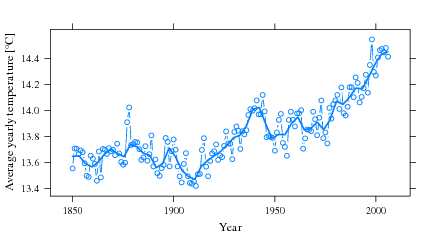I’m not sure anyone else is saying this, so I will: I think **there is
a clear and unambiguous scriptural mandate to reduce our current
energy consumption**.
Now before you dismiss this post, this author and this blog as just
another bible-thumping fanatic, remember that in certain countries,
certain political parties profess strict adherence to Scripture while
being overtly skeptical about the whole climate warming problem. I
think they are wrong and here’s why.
Let’s first review why, from a scriptural point of
view, one could in principle argue that whether we take action or let things run
as they are makes no difference. I’ve heard some of these arguments from very good
(christian) friends, and I hope I’m not going to offend anyone by
refuting them later in this post:
* Revelation 21:1 tells us that all of creation will eventually be
destroyed and replaced by a new one:
Then I saw a new heaven and a new earth; for the first heaven and the first earth passed away, and there is no longer any sea.
* God is sovereign, so no matter what we do, things will run according
to His will.
* It is highly arrogant for Man to believe that they can do anything
about the climate.
The last two arguments are probably the easiest to answer. God is
certainly sovereign, but that doesn’t remove our responsibility for
doing the right things and making the right choices in life. In fact,
God intends us to be co-creators with Him and to participate, so to
speak, in the creative act. This point has been persuasively argued
for by several authors such as C.S. Lewis and J.I. Packer.
The big problem with the first argument is that, even though the
current creation is indeed doomed in the long run, God asked us from
the beginning to take care of it, cf. Genesis 1:28:
God blessed them; and God said to them, “Be fruitful and
multiply, and fill the earth, and subdue it; and rule over the fish of
the sea and over the birds of the sky and over every living thing that
moves on the earth.”
See that? Commandment nr 3 in the whole Bible: subdue the Earth and
rule over it. No mention here of letting things run its course simply
because the creation is about (in the biblical perspective) to be
replaced.
Ah but you might argue that this command was given *before* the Fall,
and that everything went downhill since then. You’re right about the
downhill part, but look at this, Gen 3:23:
therefore the Lord God sent him out from the garden of
Eden, to cultivate the ground from which he was taken.
Man is kicked out of the Garden of Eden, and what is he to do?
Essentially the same thing, e.g. rule over the Earth and cultivate it
and take care of it. The only difference being, of course, that now
it’s going to be painful to do so (Gen 3:19).
The mandate to take care of creation is repeated several times, for
instance right after Noah comes out of the Ark after the Flood, Gen
9:1-2:
And God blessed Noah and his sons and said to them, “Be
fruitful and multiply, and fill the earth. The fear of you and the
terror of you will be on every beast of the earth and on every bird of
the sky; with everything that creeps on the ground, and all the fish
of the sea, into your hand they are given.”
Or of course Psalm 8:5-6:
Yet You have made him a little lower than God,
And You crown him with glory and majesty! You make him to rule over
the works of Your hands; You have put all things under his
feet.
God intends us clearly to rule and manage His creation, no matter what
ultimate fate awaits it.
But the real suprise came to me while re-reading the following
(Deut. 22:6-7):
“If you happen to come upon a bird’s nest along the way,
in any tree or on the ground, with young ones or eggs, and the mother
sitting on the young or on the eggs, you shall not take the mother
with the young; you shall certainly let the mother go, but the young
you may take for yourself, in order that it may be well with you and
that you may prolong your days.
This was one of the many commands given Israel before entering the
promised land. The spirit of this passage, and of others like it, is
unambiguous: God is asking us simply to be **utmostly careful in managing our
natural resources**. We are forbidden to view Earth as just a vast source of
riches to be exploited as quickly and efficiently as possible. We are
explicitly commanded to make sure that Earth can go on being such a
source of riches, indefinitely if needed.
(I’ve even read somewhere that the number of years Israel spent in
babylonian captivity, 70, corresponds to the number of years the land
should have been allowed to rest since Israel took possession of it,
but didn’t. Here again, the importance of allowing natural resources
to replenish themselves is evident.)
The concept of “rest” is a potent one in Scripture. We are to rest
once a week. The land was to rest once every 7 years. We were supposed
to leave alone the corners of our fields that weren’t harvested. In
other words, **Scripture is full of passages mandating a careful
management of our natural resources**. Arguing that we can do whatever
we want with Earth simply because it is doomed to the eternal fire
anyway is not only lazy and criminal, it is also doctrinally false.


